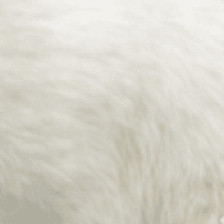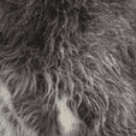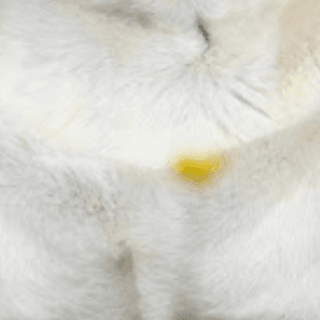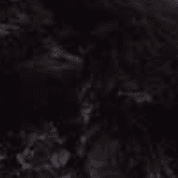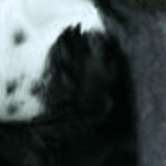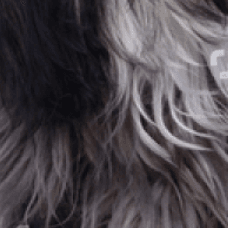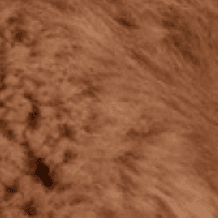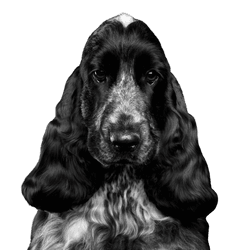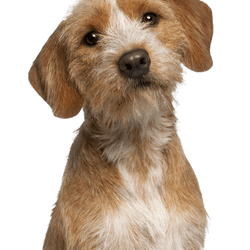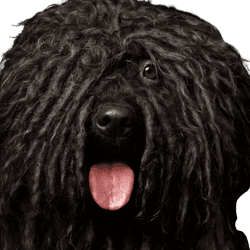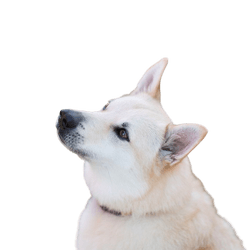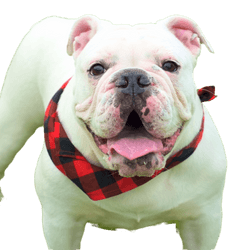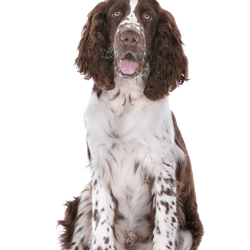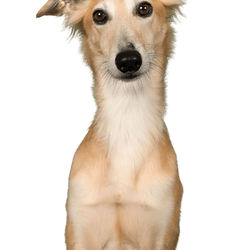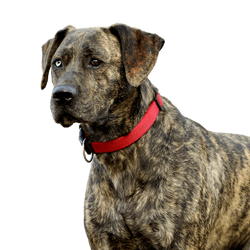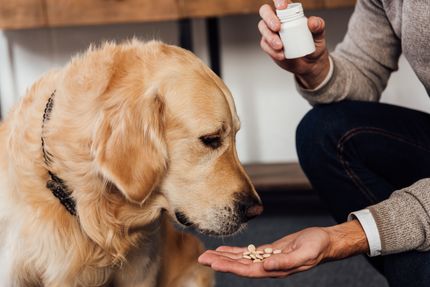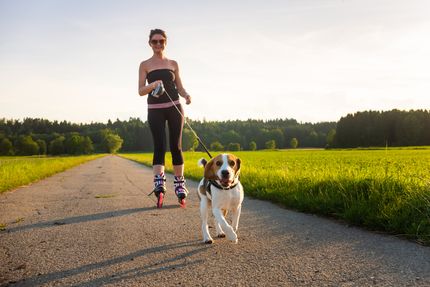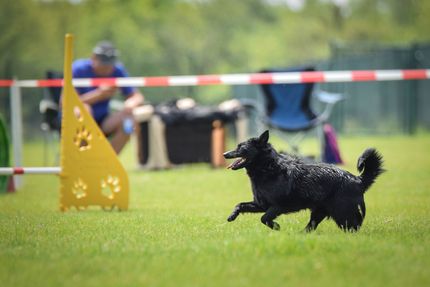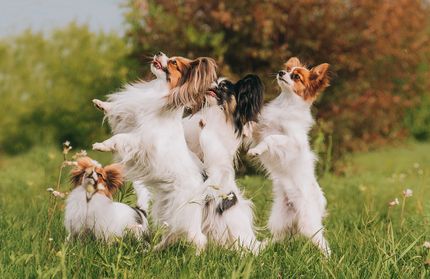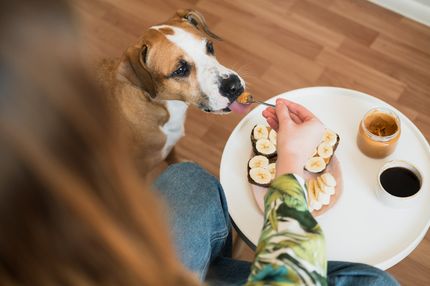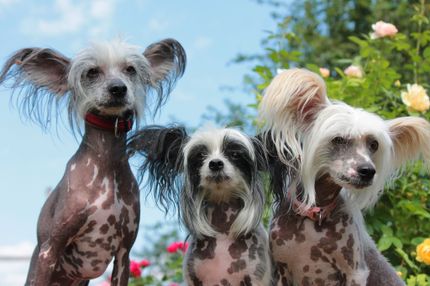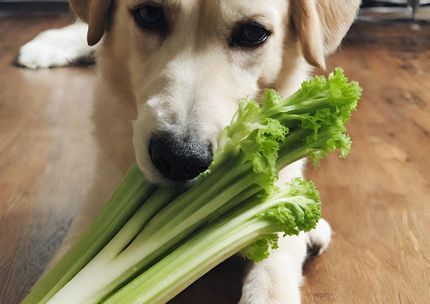Facts & Origin
Origin and history of the poodle
Cynologists believe that the first poodles existed more than 2,000 years ago in Persia and ancient Rome, making it one of the oldest dog breeds. At the beginning of the Middle Ages, they were widespread, especially in France. Because of their enthusiasm for water, which they probably inherited from the already curly water dogs, and their swimming talent, they were used, among other things, to hunt ducks and other waterfowl. Hence its official name: "caniche " comes fromthe Frenchword"cane", a term for thefemaleduck.
On the French and Portuguese Atlantic coast, they also helped fishermen haul in their nets. From their love of water also derives the name we know today, whose origin lies in the word "Pfudel". This means nothing else than "puddle". Later, the poodle caused a sensation among circus people: since they quickly learned tricks, they were real crowd pullers. A milestone was the year 1889, when the breed standard was defined.
Suitability and attitude
With its adaptability, it is suitable for life in the city as well as in a house in the country. At the same time he is a great companion dog, which learns above average fast new tricks but also makes a good figure in agility. Therefore, they are also well suited for very active people.
Hypoallergenic Parlor Lion
His typical curly coat grows all year round, so there is no coat change; however, it does not shed either. This characteristic has given it a certain notoriety as a "hypoallergenic dog breed", even though this term is often criticized. Whether an affected person is actually allergic to the dog should always be tested individually.
However, what seems like a nice relief at first requires a lot of care: the coat must be brushed regularly and clipped about every eight weeks. Which shearing you choose is up to you. For breeding shows, however, there are certain regulations.
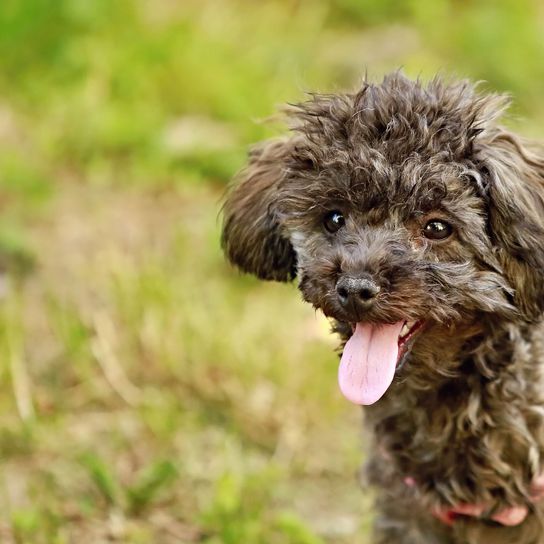
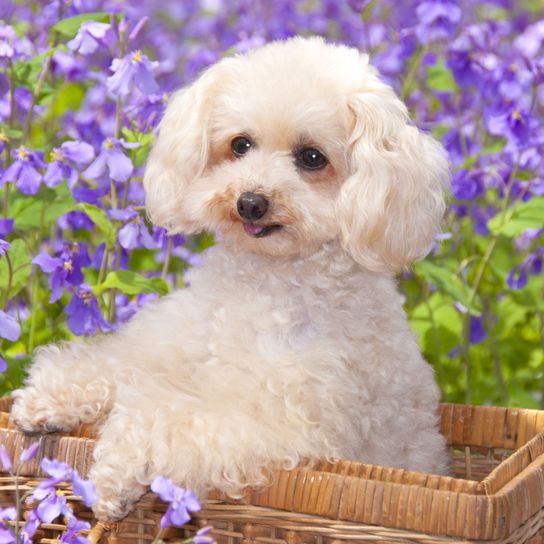
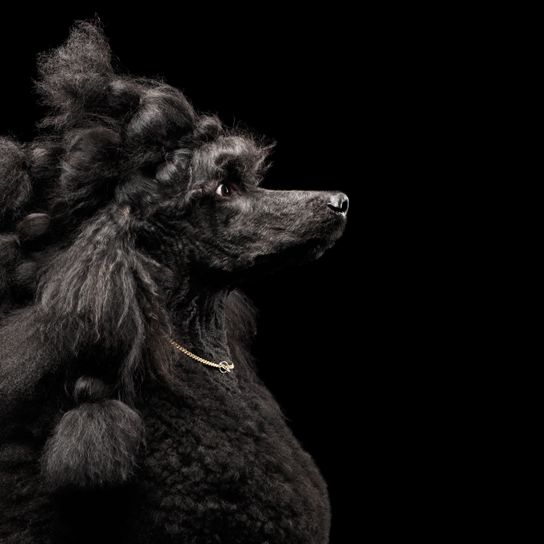
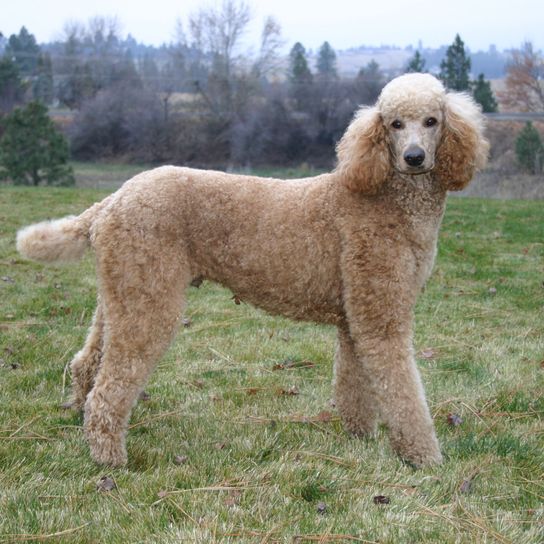
| Alternate Name | Caniche |
| Origin | Germany |
| Life expectancy | 12 - 15 years |
| Care requirements | high-maintenance |
| Activity level | average to high |
| FCI group | Poodle |
| AKC group | non-sporting group |
| KC group | utility group |
Poodle mixes
Attitude, character and temperament of the breed
Typical character traits of the poodle
The Poodle is one of the most uncomplicated companions you can imagine. Thanks to its moderate urge to move, it feels comfortable even with older people who take it for leisurely walks. They adapt to any housing conditions and are affectionate companions in all circumstances. The four-legged friend is always in a good mood and never aggressive. Therefore, he also gets along with conspecifics. Mostly he welcomes people with a wagging tail, if necessary he defends his family with loud barking.
However, the mental challenge is important for the breed. When learning tricks, your darling runs up to his top form. Dog sports such as obedience or agility are also fun for the animal. Poodles are also seemingly fearless and remain calm even in the biggest hustle and bustle. This is one of the reasons why you can take them anywhere. On top of that, most representatives of the breed like to ride along in the car. Since the Poodle is always up for an adventure, it is perfect for children. If he stays healthy, he will remain playful until old age.
Character
Usage
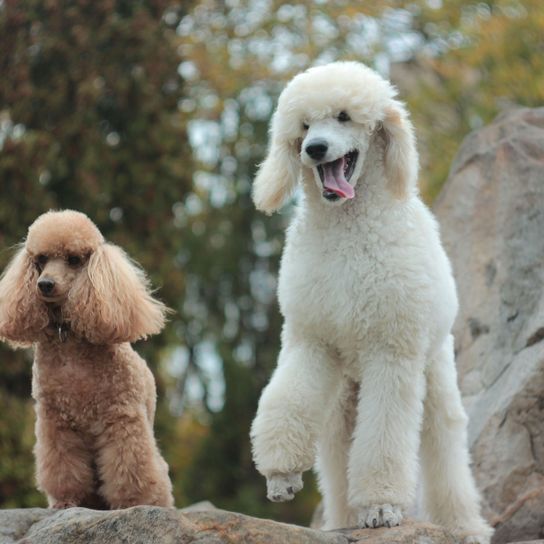
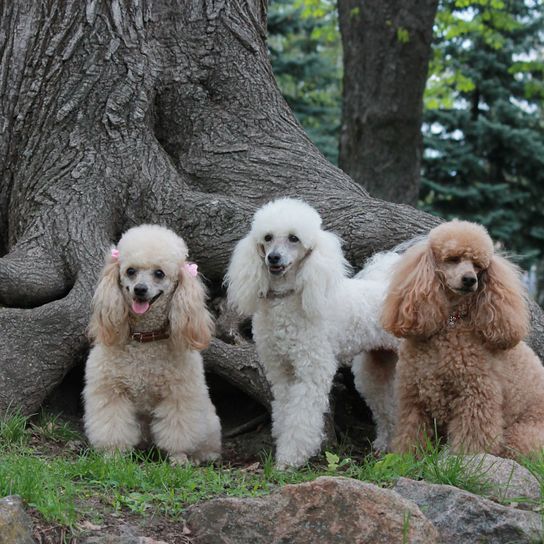
Health and life expectancy of the Poodle
A healthy Poodle will live to be about 13 to 17 years old. However, it is important to watch out for the following diseases:
- Progressive retina atrophy
- Cataract
- Patellar problems
- Epilepsy
If you choose a Poodle mix, hereditary diseases are usually less common.
Poodle breeding, purchase and adoption
Since the Poodle is prone to eye problems, it's best to pay explicit attention at the breeder to what the parents' visual system looks like. Also, make sure that the breeder is reputable and registered with a breed club. A poodle from the breed can sometimes cost up to 2000 euros.
Now and then, however, there are also poodles that are housed in animal shelters or animal welfare associations. Inquire best whether there could be a dog there, which fits to you.

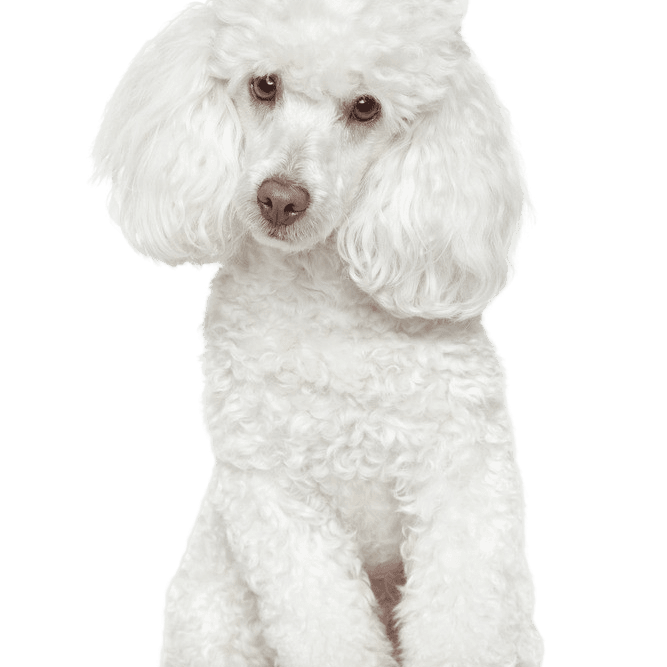
Breed characteristics of the Poodle
The Poodle is classifiedby the FCI as Group 9(Companionand Society Dogs),Section 2(Poodles). The breed standard does not require a working test.
According to its grace, the Poodleaprancingandlight-footedßsible gait.
Size divisions
Today the poodle is available in four different sizes and therefore the maximum weights of the dogs are also different. In the table below you can see the maximum weight and the approximate height at the withers:
| Large Poodle | 45-60 cm | 28 kg |
| Small poodle | 35-45 cm | 17 kg |
| Dwarf poodle | 28-35 cm | 6 kg |
| Toypoodle | 24-28 cm | 3 kg |
The head
The head of this dog breed is distinguished, straight and in proportion to the body. Itmust also be well cut, neither too heavy nor excessivelyfine. The width of the skull is less than half the length of the head, givingan oval shape whenviewed from above, and a somewhat convex shape inprofile. The longitudinal axes of the skull andbridge of the noseare slightly divergent.
Thesuperciliary archesaremoderatelyaccentuated butcovered with long hair and between them is a forehead furrow, decreasingtowards the strongly pronounced occiput.In theMiniature Poodlethe occiput may be less accentuated . The stop is little pronounced in all size divisions ,but in no caseabsent. The cheeks are also not prominent, but thereforeshaped bythebones.The part below the eyes is wellchiseledand slightly filled.The zygomatic bones are only slightly accentuated.
The muzzle
The nose of the Poodle should be welldeveloped,vertical whenviewedinprofile,with open nostrils. In black,whiteand graydogs the nose is black; in the browns it is brown.In apricot or red-colored dogs the nose may bebrown or blackaccording to the intensity of theapricot color. However, in light apricotdogs the nose sponge must be as dark as possible.
The upper profile of the strong muzzle itself is straight and in length about nine-tenths of the length of the skull. The two lower jaws are almost parallel and thelower profile of the muzzle is determined bythe lower jaw and not by the edge of the upper lip. Thereby the lips are moderatelydeveloped, rather dry and of medium thickness. The upper lip lies on the lower lip without overhanging. In the black,white andgrayPoodles the lipsare black, in brownPoodlesbrown.IntheapricotPoodlesandred-furred specimens the lips are more or lessdark brownor black. The corner of the lips may not be pronounced.
Poodles usually have a completescissor bite with strong teeth.
The Eyes & Ears
This breed of dog has an alertexpression due to the almond-shaped eyes, which are set at the level of theStoppslightly oblique set in at the level of the stop.At the same time they are of blackordark brown color.AtthebrownPoodlesmaytheEyesdarkamberbeTheEyelidsareblackatthe black,whiteßenandgrayPoodles,brownatthebrown poodles.With thelight apricot-Poodlesthe eyelids must be as possiblenkel be.
The ears, on the other hand, are quite long and drooping along the cheeks. The base is in the prolongation of a line starting from the profile of the nasal crest and passingbelow theouter cornerofthe eye. They are invariably flat, but broader below the baseand rounded at thetip, which reaches and ideally overlaps the corner of the lips when drawn forward. They are covered by long, wavy hair.
The rump
The firm neck shows a slightly arched nape line, is of medium length and wellproportioned. Thehead is carried high and proud.In section, the neck is oval and without dewlap. Its length is slightly less than that of the head. The body is also considered to be well proportioned.The length slightly exceeds the height at the withers. At the same time, the upperprofileline isharmonious andfirm, leading over moderatelypronounced withers, the height of whichshould bealmost thesame as the heightfromthetop of thecroupto the ground. Continuing, there is a short back and firm, muscled loins and a rounded, but not sloping, croup.
Therib cagereaches to the elbows and is equal in width to two thirds of the depth . The forechest shows thatthe tip of the sternum isslightly prominent and sufficiently high.InLarge Poodles the chest girth(measured behind the shoulders)should exceed the height at thewithers by at least 10cm. An oval shapein cross-section is shown, which is broad in the region of the back.
The lower profile line as well as the belly are tucked up, but it does not appear exaggerated.
The tail
The tail of the Poodle is quitehighonHeighttheLumbarset. In the breed standard it is written that ideally they should be"10after9"atComparisontoback line should be carried.
The limbs
In general, the legs of the Poodle standperfectly straight and parallel, well muscled with good bone. Theheight from elbow to groundis slightly more thanhalftheheight at the withers. The shoulder blade of equal length forms an angle of approximately 110º with the upper arm. The front tarsaljoint should act as an extension of the forearm and the strong front pasternshould be almost straight in profile.
Thelegs should alsobe parallel when viewed frombehind. Thereby the musculature of a breed specimen is well developed and appears clearly. Thehip joint as well as the femorotibialjointmust alsobewell developed. The hock joint is therefore described in the breed standard as relativelywellangulated. The rather short hind pastern is thus vertical. The Poodle must be born without dewclaws.
The paws arerather small, tightly closed and form a short oval. At the same time the toes are well arched and compact, the pads hard and firm. The clawsare black in black and grayPoodles. In the brown ones they are brown. In thewhite Poodles, the claws may be any color from horn-colored to black. In the Apricot Poodlesand the Red Poodles they are brown or black; as dark as possible, depending on the color of the coat .
The coat
This breed has a skin that issupple,not limp and pigmented .
Atblack,brown,grayandapricotcoloredorredfalbenPoodlesmustthePigmentationtheColorof the Hair coatcorrespondAttheweißenPoodleswilla silver-gray skin color is aimed at.
- Poodles with curly hair (woolly poodles)have ücoat of fine, woolly texture texture,which is verycrimped,elasticundthePrintof thehand should be resistant to pressure of the hand. The wool is dense, abundant and of uniformßieven length and thus forms as wellequalmäßcurls.
- Corded poodles also havelush furoffine,woollyanddensetexture. However, this forms thecharacteristic cords, which should be at least 20 cmlong.
.
Color-wise, the Poodle can be found in solid black,white, brown, gray, apricot and red fawn. The brown should be rich,fairly dark,evenand warm. Beige and its lighter shades are not allowed. Gray is alsodesired to be even,richneitherblackish norwhitish. Apricot Poodles usually have a very even coloring as well, whichcan range fromcreamtoorange(apricot)to reddish.
Eyelids,nasal spongeas well as lips, gums,palate,naturalopenings,scrotumand pads of feet are always well pigmented.In light colored apricotdogs, the entire pigmentation must be as dark as possible.
| Fur length | medium |
| Fur | curly |
| Ear shape | Floppy Ear |
| Tail | lang |
| Anatomy | slim, sporty |
| Size ♀ | 45 - 60 cm |
| Weight ♀ | 18 - 28 kg |
| Size ♂ | 45 - 60 cm |
| Weight ♂ | 18 - 28 kg |
| Suitable For | suitable for allergy sufferers, Beginner, Blind people, Children, Seniors |
Colors



Known Diseases
Epilepsy
Definition: Dog has epilepsy if, for example, at least two epileptic seizures occur more than 24 hours apart.
Cataract
Cataracts are still one of the most common causes of blindness, even in dogs.
Progressive Retinal Atrophy (PRA)
Progressive retinal atrophy (PRA) is a slowly progressive death of the retina in dogs.
Patellar problems
Problems with the Patellar can be a displacement or weak kneecap, which is one of the most common causes of lameness in dogs, also because of overweight.
Eye diseases
Often occur with allergies and intolerances.
FAQ
-
Large Poodle, Small Poodle, Toy Poodle and Standard Poodle or Miniature Poodle.
-
No, poodles are not aggressive.
-
The coat of the Poodle is called pubescence. It sheds very little, if at all, and is therefore considered a "hypoallergenic breed".
-
Depending on the type, a poodle can cost between 1500 and 4500 euros. Especially large or king poodles are among the most expensive dog breeds.
-
The poodle is a dog breed known for its intelligence, affection and cuddly appearance.
-
The size of a poodle depends on the size category. Small poodles grow up to 35 cm, medium poodles up to 45 cm and standard poodles over 45 cm.
-
The coat of a poodle is long and curly, which requires regular care. It is important to brush the coat at least once a week to prevent and remove tangles. It is also recommended to trim the coat regularly to keep it in shape.
-
Yes. Poodles are intelligent and adaptable dogs, but they require regular training and socialization to improve their behavior and manners. They can be good family dogs, but it is important to make sure you have the time and commitment to meet their needs.
-
It is important to train and socialize a Poodle early on to avoid undesirable behavior. Positive reinforcement is an effective method for training Poodles, and it is important to be consistent and patient to achieve the best possible results. It is also important to keep the Poodle regularly occupied and challenged to improve his physical and mental abilities.







